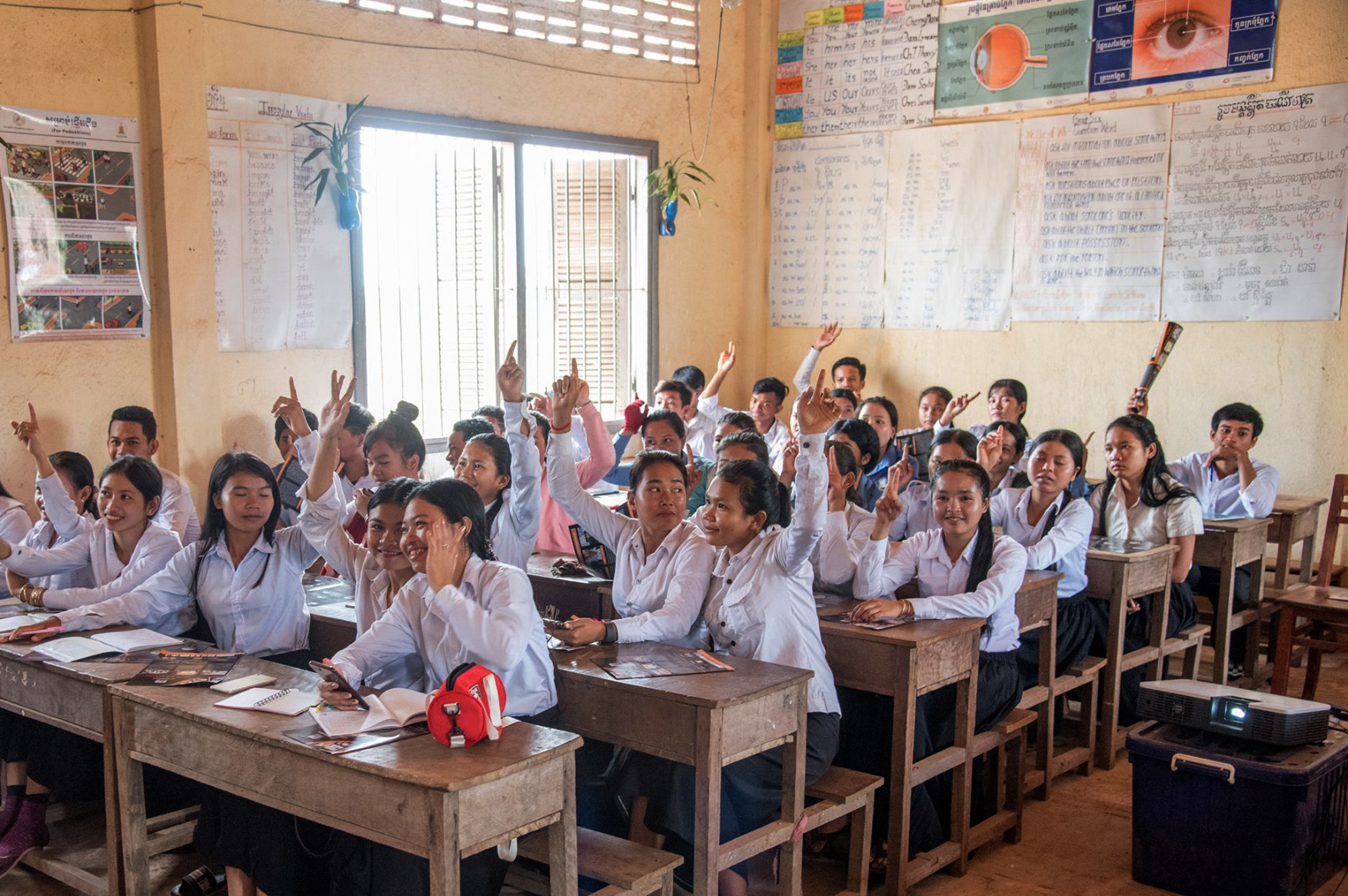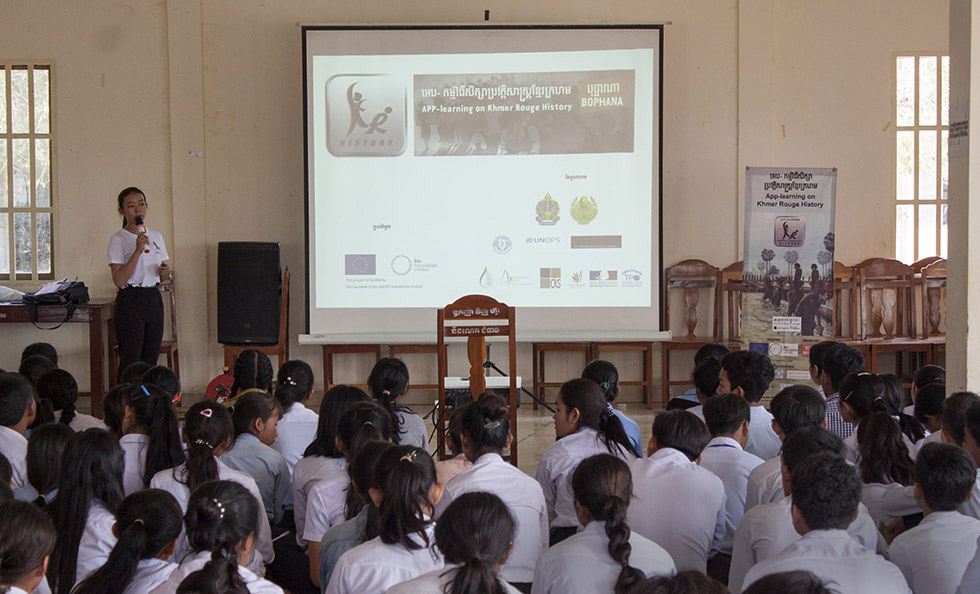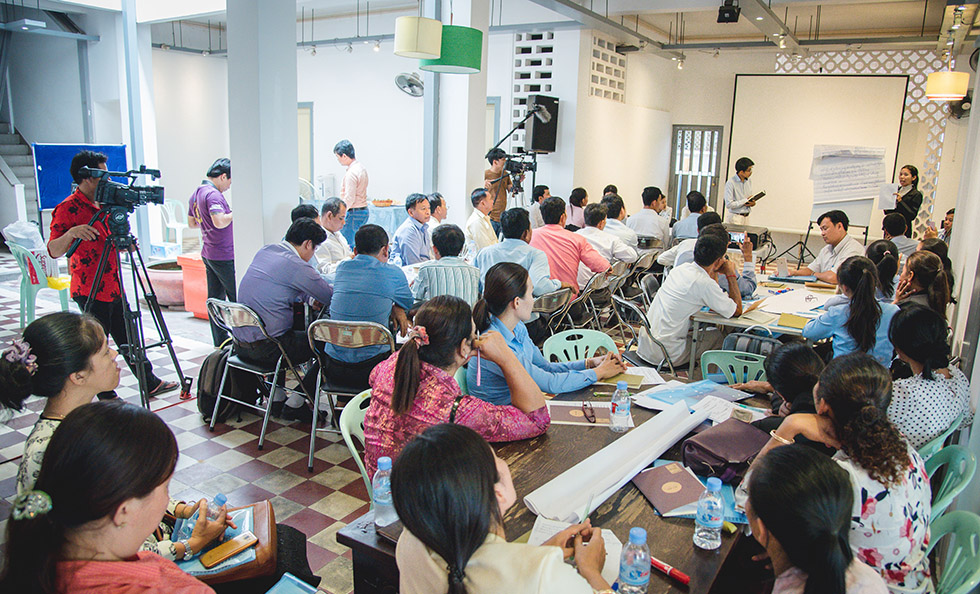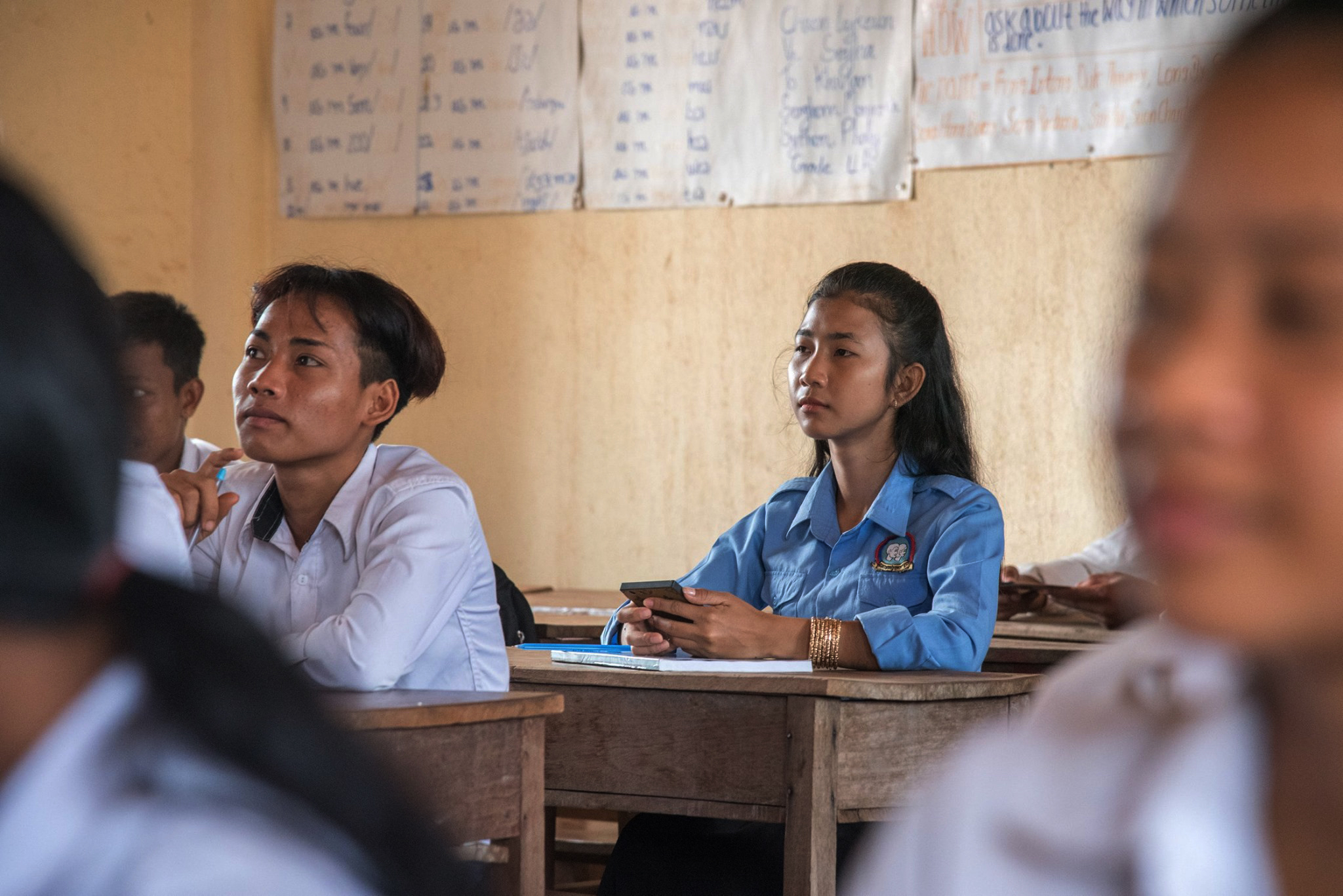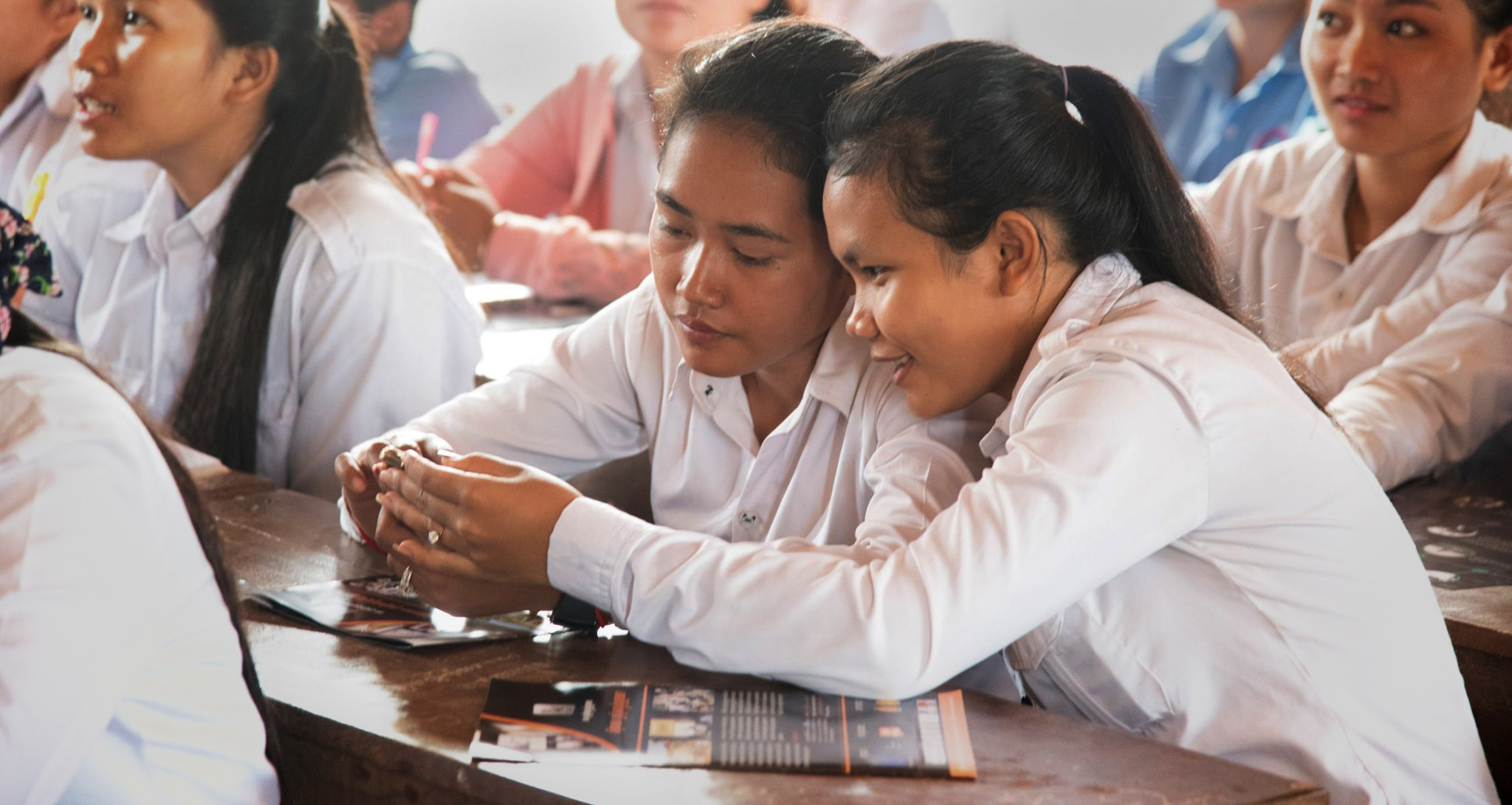
Teaching the history of the Khmer Rouge to a new generation
November 2015 - present
Cambodia
Teaching the history of the Khmer Rouge to a new generation
November 2015 - present
Cambodia
Schools, hospitals and factories were closed, money and private property were abolished, modern technology and religion were banned along with communication with the outside world and families were separated. An estimated two million people died, though the exact figure is contested.
Cambodia has a very young population: 68% of Cambodians are under the age of thirty, and are second and third generation offspring of the survivors of the Khmer Rouge era.
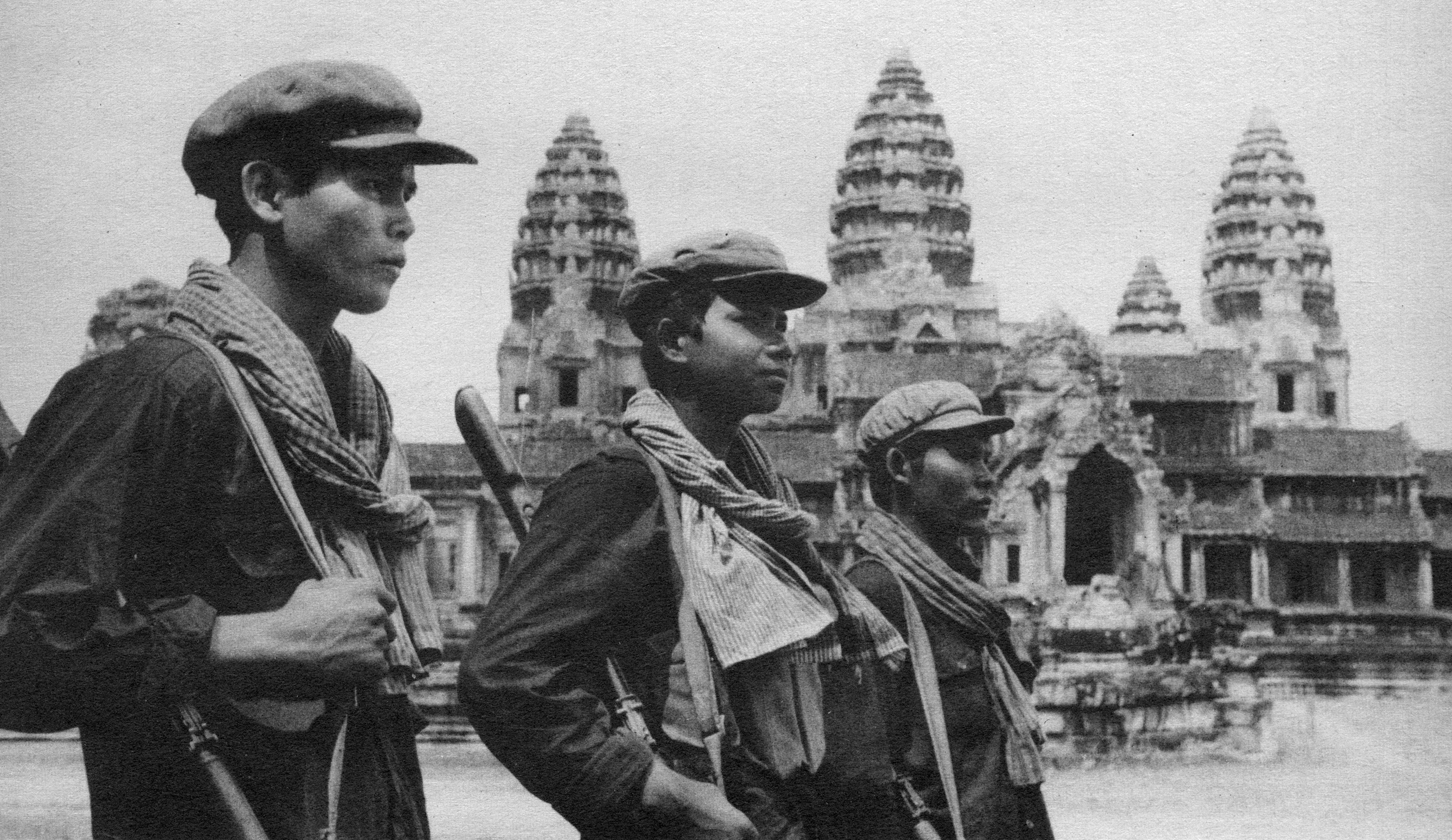
In 2009 new legislation required students in Cambodia to learn a module on the history of the Khmer Rouge. This project aimed to help develop the classroom module by updating information, diversifying the pool of resources and making them more widely accessible. It was decided that a mobile app would be an innovative approach that could effectively reach the target demographic of high school students.
Using this resource teachers will be able to more accurately convey the history of the regime, doing so in a way that encourages young audiences to move beyond the classroom and into the community. This creates a more personal learning experience, in which the audience can connect what they learn to their own lives.
The Khmer Rouge Tribunal tried and prosecuted the most senior Khmer Rouge leaders. Included in the trials was the enhanced recognition of victims through collective and moral reparation, in the form of projects that benefit civil society. The project of developing the Khmer Rouge history app was officially recognised as one such repatriation project offered to the victims of the Khmer Rouge, represented as Civil Parties at the Extraordinary Chambers in the Courts of Cambodia (ECC). In Case 002/02, the ECC recognised that the app fosters intergenerational dialogue and is an important way of educating the younger generation about the past in order to prevent the repetition of the events of the Khmer Rouge period, as and as such, is one way of addressing the harm caused to civil society during that period. Rei Foundation supports this project along with the European Union.
This project supports the pursuit of justice, human rights and reconciliation for Khmer Rouge victims by broadly disseminating educational resources and information on the Khmer Rouge era across schools and communities within Cambodia. The app is currently available in Khmer and English, with a Japanese-language version currently being created.
Return to Projects




